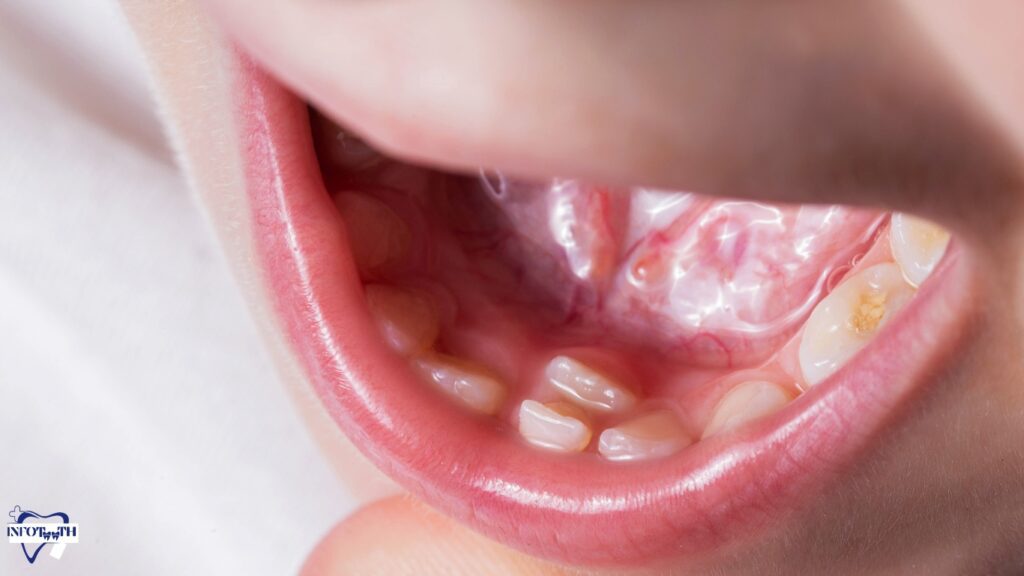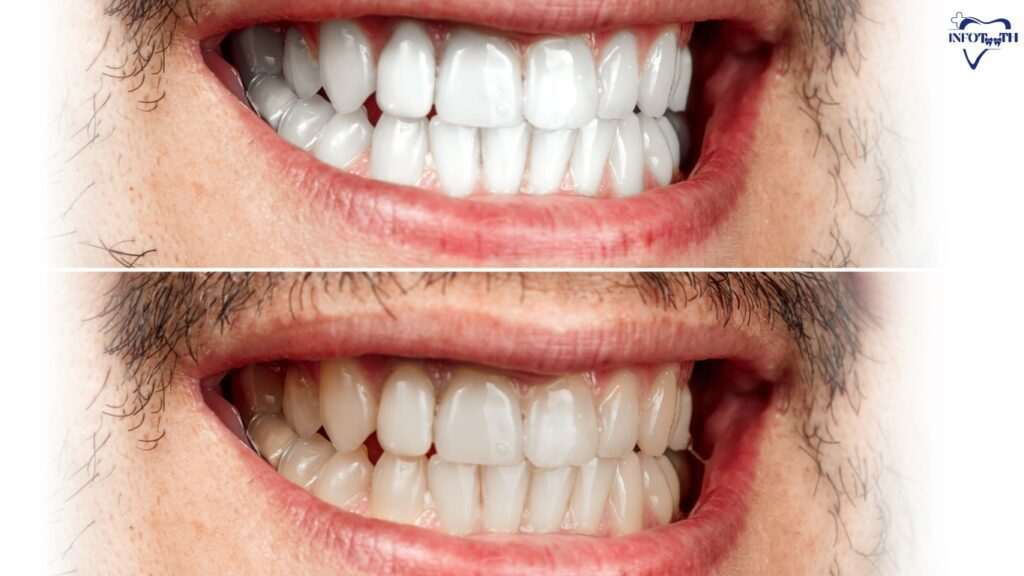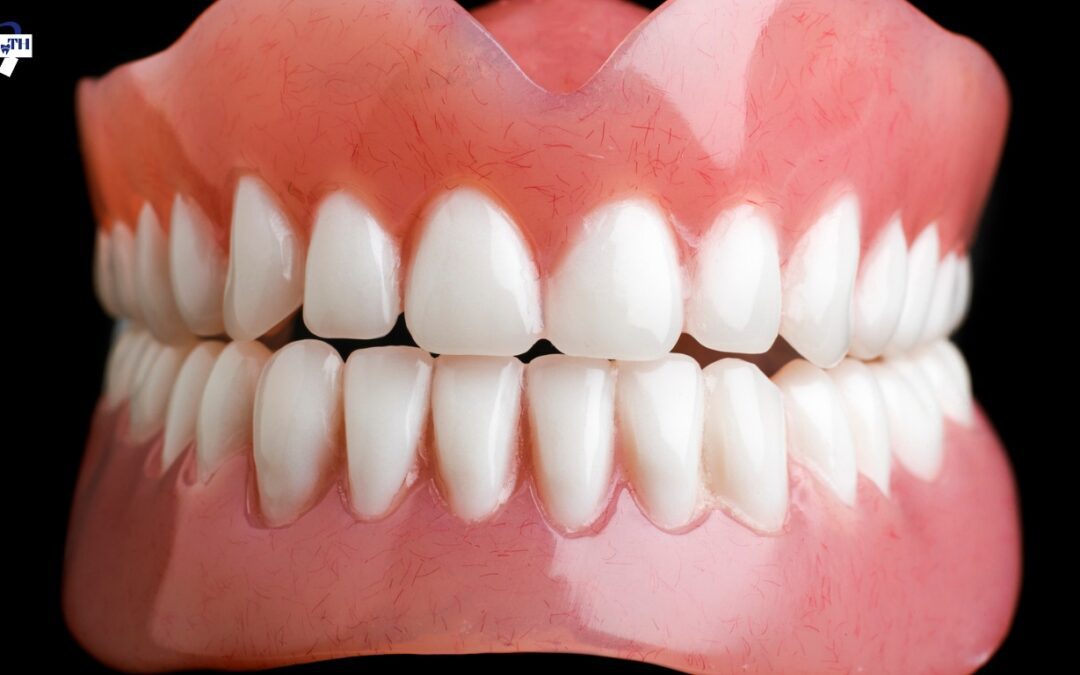Canted teeth and alignment tilts that affect a person’s smile symmetry—represent more than just a cosmetic concern. Significant oral health issues, such as difficulty chewing, difficulty speaking, and an increased risk of gum disease, can be brought on by this condition. You must understand its causes, which range from environmental factors to inheritance.
Table of Contents
Correctly diagnosing and treating canted teeth improves smile aesthetics and oral health, reducing the risk of long-term problems and raising the quality of life.
What are Canted teeth?
These are misaligned, tilting or slanting to one side, which throws off the balance of a person’s bite and smiles. Many factors, such as trauma, developmental problems, or genetic predisposition, might contribute to this misalignment. Beyond being unattractive, canted teeth can cause functional issues like uneven tooth wear, trouble biting and chewing, and a higher risk of oral health problems like gum disease and temporomandibular joint disorders.
Teeth inclined or tilted in a non-vertical position within the dental arch are called canted teeth, also known as dental canting or tooth inclination. Due to this break from normal alignment, the teeth may slant to one side, making the smile uneven. While some degree of tooth inclination is normal and natural, overly canted teeth can cause problems with function and appearance that may need to be treated.
Types Of Canted Teeth
Teeth that are canted, also known as dental tilt or misalignment, can take many different forms, each with unique patterns of displacement within the dental arch. Understanding the various types of slit teeth is crucial for precise diagnosis and customized therapy strategies.
Horizontal Cants:
When teeth tilt horizontally, the result is asymmetrical dental alignment and uneven biting surfaces. Teeth that are misaligned of this kind can sway to one side or have a visible tilt compared to their neighboring teeth. Both functional problems and aesthetic concerns may result from horizontal cants that affect the upper and lower dental arches.
Vertical Cants:
Abnormalities in the overall dental appearance are caused by variations in the length or height of teeth along the vertical axis. This misalignment may disturb the harmonious alignment of the dental arch, making teeth appear longer or shorter than their counterparts. Vertical cants can also affect the vertical relationship between the upper and lower teeth, affecting bite function and oral health.
Anterior Cants:
These are characterized by the misalignment of teeth in the mouth’s front area, especially the canines and incisors. When teeth of this type are canted, the smile line frequently exhibits visible asymmetry, with some teeth sticking out or tilting to one side. When anterior cants affect one’s confidence and facial aesthetics, people may seek orthodontic treatment to achieve better dental symmetry.

Posterior Cants:
Misalignments that affect the premolars and molars in the posterior part of the dental arch are referred to as posterior cants. Teeth with this kind of canting may lead to an unequal biting force distribution and reduced chewing efficiency. As posterior cants may cause oral instability and dental use, immediate action is essential to prevent further complications.
Signs and Symptoms of Canted Teeth
For early intervention and successful treatment, it is essential to recognize the signs and symptoms of canted teeth. While some people might only feel slight discomfort or aesthetic concerns, others might have more severe symptoms that point to underlying dental problems.
Crooked Teeth:
Crooked or misaligned teeth within the dental arch are one of the most apparent indicators of canted teeth. These teeth could appear rotated, shifted, or tilted from their natural positions, throwing off the smile’s overall symmetry and alignment.
Asymmetric Bite Patterns:
When teeth are canted, the bite pattern becomes asymmetrical, resulting in some teeth coming together too soon or unevenly when biting and chewing. Over time, an imbalance in orthodontic forces may cause some teeth to experience excessive damage, raising the risk of decay and fractures.
Jaw Soreness:
People with crooked teeth may feel pain or discomfort in their jaw, especially in the temporomandibular joint (TMJ). Chewing, speaking, or yawning can make this pain worse. It can also make it difficult to perform daily tasks, which generally lowers the quality of life.
Having trouble speaking or chewing:
Canted teeth can cause the failure to chew food properly or speak clearly. Malocclusion or misalignment problems may cause this difficulty, resulting in difficult pronunciation and inadequate chewing.
Causes Of Canted Teeth
Genetics
Because some people inherit dental traits from their parents that can lead to canted teeth, genetics plays a significant role in tooth alignment. This genetic influence may affect the size and form of the jawbone, the way teeth erupt, and the overall formation of the dental arch.
Developmental Concerns
These teeth can also result from childhood developmental problems. The growing teeth and jaws may experience pressure from habits like tongue thrusting, extended pacifier use, and thumb sucking, which could cause them to shift or tilt out of alignment. Furthermore, abnormalities in tooth eruption or early loss of baby teeth can cause permanent teeth to erupt out of alignment.
Injury and Trauma
Canted teeth may also result from trauma or injury to the jawbone or teeth. Teeth can become misaligned or tilted due to damage to the supporting structures caused by collapses, accidents, or sports-related injuries.
Abnormal Jaw Growth
Teeth can also result from abnormalities in the growth and development of the jawbone. Jaw asymmetry, in which one side of the jaw grows more quickly than the other, can cause uneven tooth alignment.

Various factors, including developmental factors, injuries, and inheritance, may contribute to the development of canted teeth. Understanding these underlying causes is essential to correctly diagnosing and treating canted teeth and restoring ideal dental alignment and function.
What is the Effect On Dental Health?
The effects of canted teeth on oral health extend far beyond appearance and significantly impact various aspects of dental health. One of the main effects of canted teeth is the interruption of proper obstruction, or how the upper and lower teeth fit together when biting or chewing. Because of this misalignment, the bite forces may be distributed unevenly, causing some teeth to experience excessive wear while others are left unused. This uneven wear over time may cause early tooth damage, including chipping, cracking, and even tooth loss.
Furthermore, it may be challenging to properly clean the gaps and grooves between teeth caused by canted teeth. This may raise the chance of developing dental caries (cavities) and periodontal (gum) disease by increasing the risk of bacteria and tartar development. Additionally, temporomandibular joint (TMJ) disorders can develop due to the uneven distribution of forces on the teeth and gums caused by canted. These disorders can cause symptoms like jaw pain, popping or cracking sounds, and difficulty opening or closing the mouth comfortably.
Additionally, misaligned teeth can impact pronunciation and speech patterns, mainly if they cause problems with the tongue and lips positioning correctly when speaking. Speech difficulties and trouble speaking clearly can result from this, which can affect a person’s confidence and social interactions.
Canted Teeth After Braces
Patients can anticipate significant changes in their smile’s overall appearance and tooth alignment following braces treatment to straighten teeth. Braces correct any existing misalignments or tilting of the teeth by gradually moving them into the desired positions through gentle, continuous pressure.
Patients may feel relieved and satisfied with their newly aligned teeth after the braces are removed. However, they can preserve the outcomes of their orthodontic treatment and prevent the teeth from moving back into their original positions by using the recommended retention techniques, such as wearing retainers as directed by their orthodontist.
In addition to its aesthetic advantages, straightening canted teeth with braces can improve oral health and function. Because adequately aligned teeth are more straightforward to maintain, there is a lower chance of gum disease, cavities, and plaque accumulation. Furthermore, a properly aligned bite can lessen jaw muscle strain and enhance chewing effectiveness, which lowers the risk of temporomandibular joint (TMJ) disorders and the discomfort they cause.
What is Canted Teeth Treatment?
Depending on the degree of misalignment and unique patient characteristics, there are different treatment options for canted teeth. Canted tooth are often treated with orthodontic solutions, which include clear aligners and traditional braces. The teeth function by gradually moving the teeth around over time to realign them and improve their alignment as a whole.
Orthognathic surgery might be required in more extreme cases of canted teeth. This surgical procedure repositions the jawbone to address the underlying structural problems causing the misalignment. Though more invasive than orthodontic treatments, orthodontic surgery can significantly improve overall facial harmony and dental alignment.

Canted tooth may also be improved by cosmetic dentistry procedures like bonding or veneers, especially for small misalignments or aesthetic concerns. Throughout treatment, you must schedule routine follow-up visits with a dental practitioner to assess your progress and modify your treatment plan.
How To Fix Canted Teeth?
Fixing canted teeth usually requires a multi-step procedure to restore proper dental alignment and correct the underlying misalignment. The first step is a comprehensive examination by a dentist, who will determine the severity of the misalignment and create a treatment plan specifically for you.
Orthodontic treatment is frequently the main technique for straightening teeth. Braces or clear aligners may be used to gradually move the teeth into their proper positions over time. By gently pressing on the teeth, these procedures help realign them and enhance dental symmetry.
Orthognathic surgery may be advised when orthodontic treatment alone is inadequate. This surgical procedure aims to realign the jawbone to address structural problems causing teeth misalignment. Furthermore, canted teeth can look better with cosmetic dentistry procedures like bonding or veneers, especially for small misalignments or aesthetic concerns.
After canted teeth are fixed, routine dental examinations and care are essential to guarantee the stability and long-term health of the smile. Correcting canted teeth with the right treatment techniques can improve overall oral health and function and create a more aesthetically pleasing smile.
Canted Teeth Before And After
It’s critical to comprehend the effects of canted teeth on a person’s general and oral health before treating them. When teeth are in the pre-treatment stage, they frequently appear slanted or tilted to one side, giving an uneven smile. This misalignment can cause functional issues and impair the smile’s appearance. Canted teeth may make it difficult for an individual to chew and bite correctly, resulting in uneven teeth wear and even pain in the jaw.
Nonetheless, the consequences of canted teeth can be successfully addressed with the correct diagnosis and care. Orthodontic solutions like braces or clear aligners are frequently used to progressively move the teeth into their proper positions to restore alignment and symmetry to the smile. Surgical procedures might be necessary in more extreme situations to realign the jaw and guarantee appropriate dental alignment.

After treatment, those with canted teeth can benefit from a more balanced and attractive smile. Aligned teeth improve the appearance of the face, function better, and promote general oral health. People who have canted can feel better about their smiles and benefit from better dental alignment and function in the long run.
Conclusion
In conclusion, treating canted teeth is essential for boosting general oral health and function and the appearance of a person’s smile. Orthodontic treatments, orthognathic surgery, and cosmetic dentistry options can correct misalignments and achieve a more harmonious and balanced smile. The long-term stability and success of the treatment outcomes depend on routine dental examinations and maintenance. People who proactively correct their teeth can benefit from increased oral health and confidence.
FAQs
Q: Do canted teeth only have an aesthetic purpose?
A: Although these can affect the appearance of a smile, they can also cause functional issues like difficulty speaking and chewing, as well as a higher risk of temporomandibular joint disorders and gum disease.
Q: Is it possible to correct canted teeth without surgery?
A: Canted teeth can often be adequately corrected with orthodontic treatments, such as braces or clear aligners, without requiring surgery. However, in severe cases, orthognathic surgery might be necessary for the best outcomes.
Q: When should canted teeth be treated?
A: Although orthodontic treatment for these teeth at any age is usually advised to begin during adolescence when the jaw is still growing, adults can also profit from the available treatment options.
Q: What is the duration of tooth alignment?
A: Depending on the degree of misalignment and the selected treatment plan, the length of time needed to treat canted teeth varies. Orthognathic surgery may necessitate a more extended recovery than orthodontic treatments, typically lasting several months to a few years.
Q: Can canted teeth cause pain or discomfort?
A: Yes, canted teeth can cause a variety of discomforts, such as headaches, jaw pain, and trouble chewing. Over time, discomfort may result from the uneven pressure of the misalignment on the teeth and surrounding structures. Treating your canted teeth can lessen these symptoms and enhance your general comfort and oral health.

